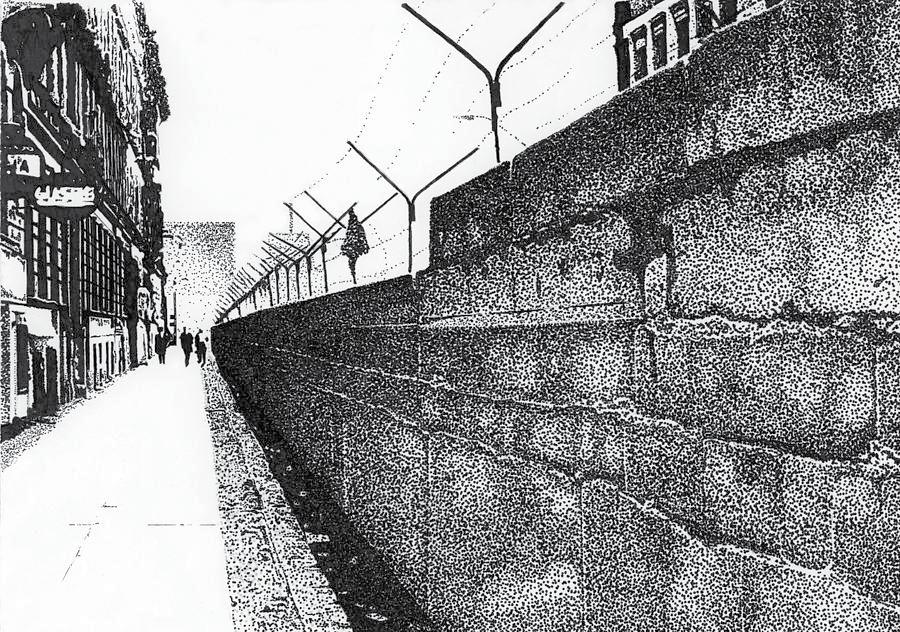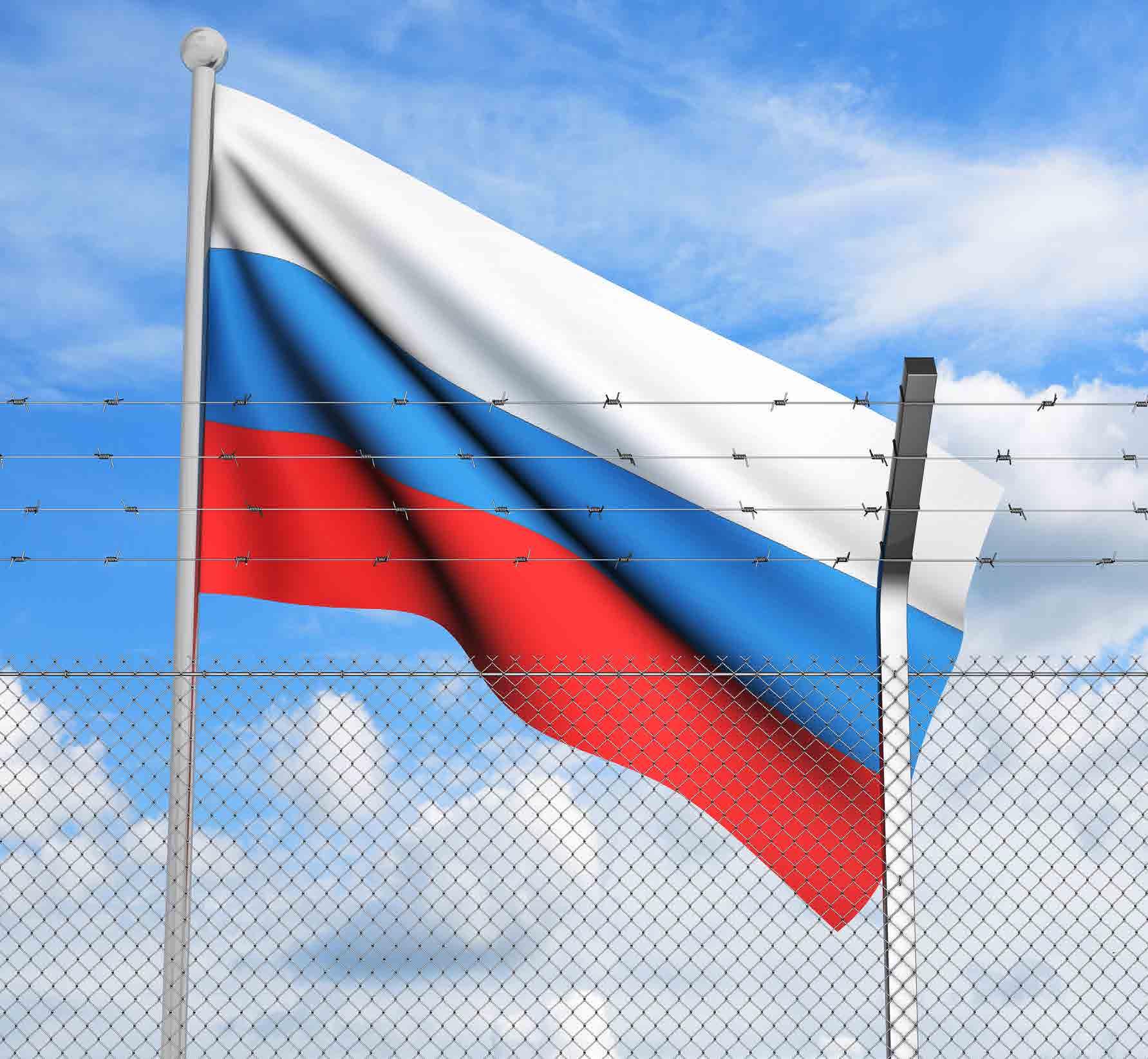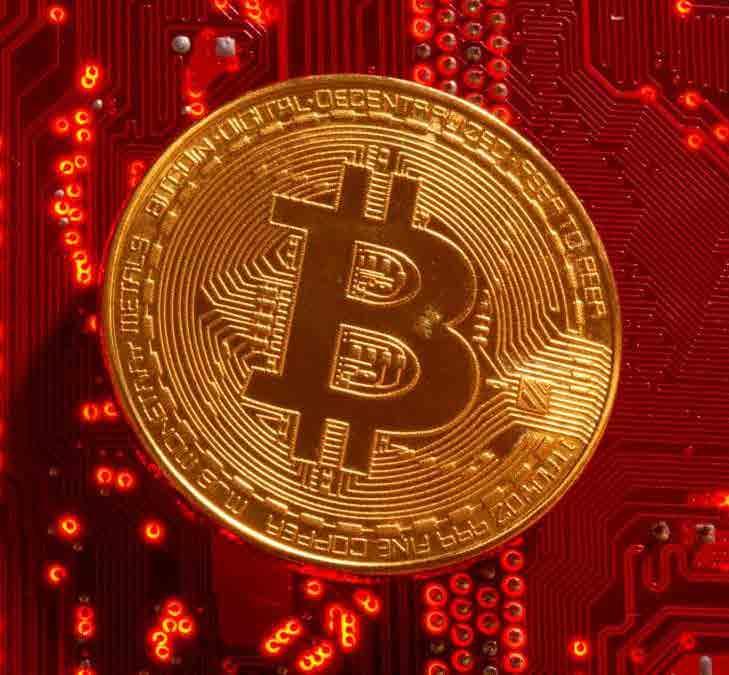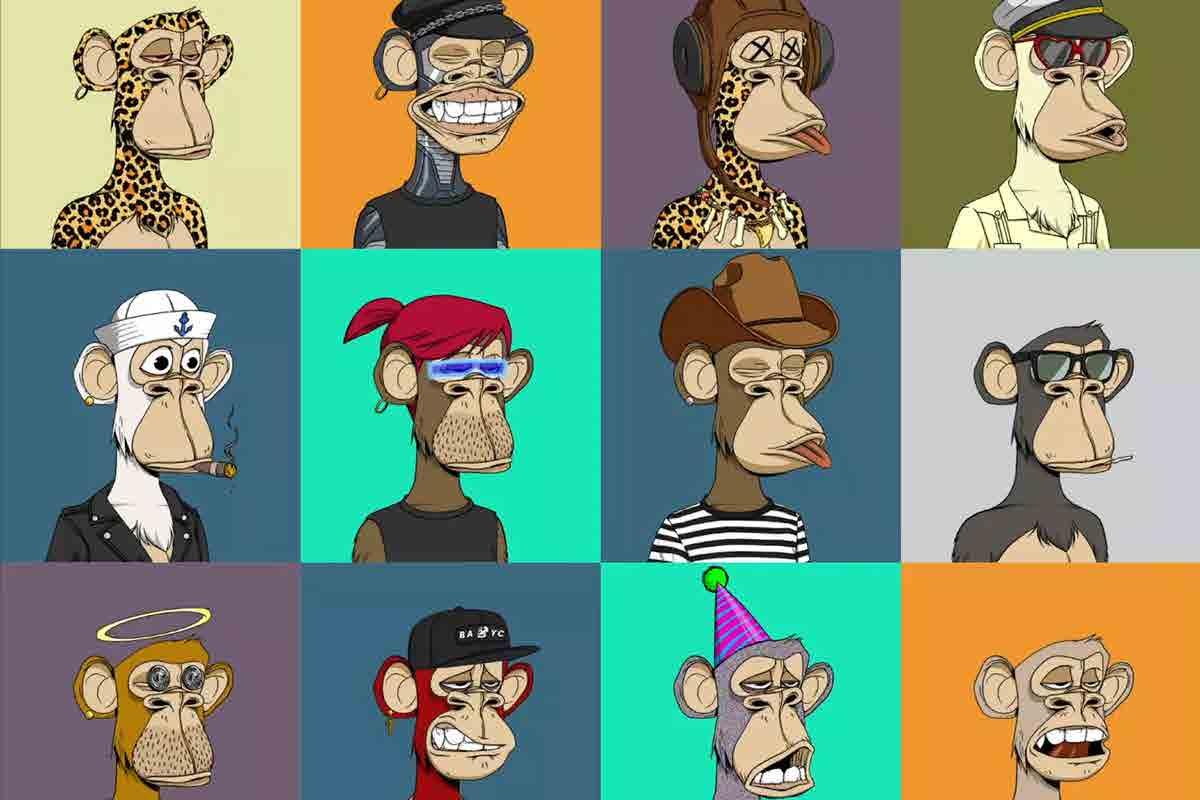
20 minute read
28Breaking Through Russia's Digital Electronic Wall
Crypto Weekly
BREAKING THROUGH RUSSIA'S DIGITAL ELECTRONIC WALL
Advertisement
As Russian tanks rolled into Ukraine, Maria, a 37-year-old mother in western Russia, didn't hesitate to set up a virtual private network, or VPN, to circumvent the blockade she saw coming across the country's Internet. "I read about the conflict with anger, sadness, and empathy," Maria says about the conflict. It was a good instinct. The VPN became invaluable once the Kremlin blocked Western news websites and social networks. Every 10 to 20 minutes, she refreshed news about the war on Facebook and Instagram, communicating with a friend in the United States. Maria says, however, her mother believes what she sees on Russian state TV, which portrays the invasion as a righteous military operation to liberate Ukraine from the Nazis. Maria vowed to stop discussing the war with her mother after a fight left her in tears.
Some Russians with ties to the United States and Western Europe are attempting to burst Russian President Vladimir Putin's propaganda bubble, alienating their own families, friends, and co-workers. War in Ukraine deepens the rift between young, tech-savvy people and an older generation that gets its news mostly from TV and was raised on Putin's vision of the country.
According to World Bank statistics, in the United States, almost 85% of people are online. However, only a small number of those individuals use American social networking sites. Researchers at eMarketer found that in 2022, about half of Russian Internet users use Instagram, while only a fraction use Facebook and Twitter.
Many Russians use digital tools to circumvent Russian censorship. People search online for independent news about the war, separating themselves from government propaganda that floods television, government-backed websites, and large sections of public social networks, such as Telegram and VK, which many pro-government organizations use. Interviews with a half-dozen people in Russia revealed the ideological divide. Most of them spoke on the condition of anonymity to avoid violating the country's fake news law.
Mikhail Shevelev, a Moscow-based journalist, describes the "very serious" and "drastic" divide between those who get their news from independent online sources and those who primarily rely on television. He said it is very difficult for anyone - even Russians who do not reside in Russia - to comprehend the sheer magnitude of absolutely illogical perceptions of information and outright lies.
Putin is also using increasingly sophisticated censorship measures. Russians over 50 make up the majority of viewers of state television news, which is flooded with reports about U.S. biowarfare laboratories and Ukrainian "Nazis." Apart from the recent restrictions
Crypto Weekly
placed on Facebook and Twitter, Russia has also blocked the websites of many major Western media organizations, such as the BBC and Deutsche Welle. Sanctions and public pressure have led Apple, Microsoft, and Amazon to stop doing business in the country.
Russians, however, seem determined to circumvent the restrictions. According to Sensor Tower, between Feb. 24 and March 13, 6.4 million VPNs were downloaded from Apple's App Store and Google Play store. Only 253,000 VPN apps were downloaded in the three weeks before Russia invaded Ukraine.
According to Russians who spoke with The Washington Post, independent Russian news organizations that have moved their correspondents abroad continue to cover some of the events in Ukraine, and VK, the most popular social network in Russia, is still active. There are also some Russians who get their news from independent sources in addition to Telegram and YouTube.
Despite the war, Alexander, a tech worker in his 20s from Moscow, knows of people who have unfriended each other online, writing posts about how they'll never shake a person's hand again because of their views on it. His aunt, who he had known for ages, stopped talking to some of her friends. Daria, a Moscow resident in her 20s, says, “Government-linked accounts post pro-government comments on VK. Bots and genuine government supporters are sometimes challenging to tell apart."
Russia's VPN users are being put off by the level of posts and arguments surrounding the war. According to Lucy, a 29-year-old designer from the North Caucasus region of Russia, angry comments about Russians have caused her to cut back on using Instagram. There are relatives in Ukraine who have been forced to flee due to the Russian attack, and she is half Ukrainian herself. However, the tense environment online has made her reluctant to participate in social media.
“Initially, I empathized a lot with them. Though I wasn't there, I could feel the pain they were experiencing," she said. Lucy began receiving death threats online, so she unfollowed many of the Ukrainian accounts she followed. She said, "It is extremely difficult to be blamed for something you did not do." The online attacks on Russians are leading some young Russians to take a more pro-war stance in line with the government. There were memes and posts decrying "Russophobia" on one Telegram channel and saying that Western countries were supporting Ukraine out of hatred for Russians.
A Telegram group with over 110,000 members posted a video of volunteers setting off for Ukraine to help with the invasion. “It is unnecessary to have the whole world with us, dear friends,” the caption under the video reads, "as long as all the Russians are with us." Putin's campaign to control the once-open information ecosystem in Russia resulted in the passage of a law responsible for its "sovereign Internet" in November 2019. Previously, Russian law required Internet providers to install government-issued black boxes on their premises, allowing the government to control Web traffic by slowing down a site's loading time or blocking it.
Some people in Russia use Tor to access services, an open source system that enables anonymous communication. Facebook and Twitter have built versions of their platforms that support Tor. According to Roskomsvoboda's Artem Kozliuk, access to basic information in Russia has become increasingly complicated with the use of VPNs and special browser plug-ins.
He explained that information is now passed through many intermediaries and obstacles on its way to users. A guide is being prepared by the organization he works for to assist in navigating its services.
However, despite the surge in VPN interest, many fear expressing their political views online due to the Kremlin's crackdown. A two-tiered information system still rules Russia. According to Daria, “Most Russians don't comment on social media or share opinions. According to TV viewers, there are no civilian casualties and our government only fights nationalists in Ukraine who oppress Russians. Images of destroyed cities and fleeing Ukrainians don't appear on government-controlled sources."
Russian Internet expert, Ilya Yablokov says, “The government uses its censorship capabilities to control the narrative within the country.” He asks, "How long are they going to win?"

Crypto Weekly
EDITORS OPINION:
UKRAINE HAS BEEN A BOON FOR THE CRYPTO INDUSTRY
Assisting the besieged Ukraine has been made possible by cryptocurrency. In recent weeks, digital money has flooded into Ukrainian coffers, according to Deputy Minister of Digital Transformation Alex Bornyakov. Cryptocurrency enthusiasts tout these donations as proof of the concept they have long been trying to sell to the rest of the world: cryptocurrencies should be the global standard for seamless, secure transactions.
Crypto may indeed be closer than ever to its destiny due to this crisis, but not for the reasons they think. Most digital tokens are generally worthless. The world is seeing the opposite of Bitcoin boosters' claims.
The cryptocurrency boom came to Ukraine at the right time. The country ranks fourth in the world in adopting digital currencies, in no small part because the government wants it that way. The Ukrainian Parliament legalized cryptocurrency last month and will shortly launch an e-version of Ukraine's currency, the hryvnia. A deputy minister oversees its digital transformation. Michael Chobanian operates the Ukrainian cryptocurrency exchange Kuna. According to him, Ukraine offers "the perfect balance between absolute anarchy and possibilities." A November 2013 New York Times article described Ukraine as "the Crypto Capital of the World." Subhead: "Where else but Ukraine?"

No reason not to, indeed. A notoriously corrupt nation seeking to clean up its act makes a pitch to a notoriously shady industry, which now falls on eager ears. Nondollar contributions are pouring in, including Bitcoin and Ethereum, along with more than 180 donated digital artworks now held by the government as non-fungible tokens, or NFTs.
While this may sound exciting, a closer look shows that perhaps the question today isn't
Crypto Weekly

why not, but simply why. What can Ukraine do with an immutably encoded link to a jpeg that is an NFT? There's not much other than selling it for cryptocurrency, then selling the cryptocurrency for legal tender.
In Ukraine, cryptocurrency has been used to purchase fuel, food, and other non-lethal supplies, such as bulletproof vests and nightvision goggles. Besides converting crypto to fiat, the Kuna Exchange also assists the government. Especially when you need lethal supplies, real money is far more valuable. When cryptographic transactions are converted to real money, they lose the "transparency" that has been provided by the unalterable, public record of transactions on the blockchain, which is one of the major benefits of cryptography.
Cryptocurrency providers are probably not going to hold on to it. Despite the fact that cryptocurrency is a form of currency, does it provide any more convenience - or, as true believers would have it, any less "friction" - than traditional cash and credit? Aid can be accessed by Ukraine through all parts of the traditional global financial system, including online fundraising; this is not available to Russia.
‘Apply pressure to the cryptocurrency phenomenon in Ukraine, and squish it’ branding has long been associated with the appeal of this mode of contribution. People want to show solidarity with Ukraine today, with an emphasis on "show." This may, or may not, mean that they are actually helping, but definitely means telling others you are helping.
It's a chance for crypto holders to market themselves as forces for justice; for a government already adept at wooing these speculators, it's an opportunity to attract desperately needed funds from a class that has plenty of it sitting in - well, not a bank.
There's a strong possibility that what's happening in Ukraine is the apotheosis of cryptocurrency, but only because the same sad little stories are being told with the world as a stage. Ukrainian officials promised to give crypto donors a free token of a newly created asset as part of an airdrop - a common strategy to attract funds from those hoping to make more than they invested.
Internet tricksters spooked the government into scrapping the plan. In the meantime, the donors received nothing more than a warm and fuzzy feeling for their generosity. The cryptocurrency market's unique blend of genuine belief and self-promotion zeal is nothing to be ashamed of.
Bulletproof vests may not be the best use of Bitcoin and Bored Ape NFTs. However, today's hype doesn't mean we'll live life on the blockchain tomorrow; it simply confirms that crypto is mainly a desire originating in the analog world: the desire to look cool.

Crypto Weekly
BOY GEORGE TURNS 'CRYPTO-CHAMELEON' BYEMBRACING NFTS AND METAVERSE
Anew NFT project by Boy George, CryptoQueenz, has been released. With a creative persona spanning the fields of music, art, and fashion, Boy George is an iconoclast. Away from the snobbery of the art establishment, he enters the world of NFTs (non-fungible tokens). Culture Club's legendary frontman took part in his first gig in the Metaverse at the weekend and revealed his first NFT project, CryptoQueenz.
Boy George is the latest star to take to the virtual stage of Vegas City Flamingos Club and talked about the "potential for surrealist digital adventures" with NFTs and the Metaverse. He has spent several months creating a series of NFT generative art. On March 1, the digital pieces were released at the premier Opensea NFT marketplace based on his Scarman designs. As part of each digital canvas sale, the Elton John Aids Foundation and Shelter charities will receive a percentage of the sale.
Boy George discusses his attraction to the NFT art world.
In an interview with the Huffington Post, Boy George revealed what motivated him to get involved in the world of NFTs. A collection of iconoclastic NFT art created by the iconoclast is called CryptoQueenz. They are available to view and buy on the OpenSea NFT online marketplace. He spoke about his enthusiastic involvement in this digital frontier, where crypto "Wild West" coders meet curators from the art world. NFTs, according to him, "make it easier for people to express themselves by allowing them to sell and create their work."
In an online conversation he had with David Bowie in the 90s, when many believed the internet would not last, he explained the excitement surrounding NFTs. “We live our digital lives on dial-up chat." He compared those days to the restless energy surrounding Web3, with its new financial technologies, disruptive cryptocurrencies, and expanding metaverses.
In the words of the songwriter, “If Bowie, Dali, and Picasso were alive today, they would be in the thick of it and claim they invented NFTs." As Justin Sun, founder of the Tron blockchain, said, "The Metaverse is the future of art exhibits since it removes physical limitations, and it's much more fun to experience an art exhibit online than in person." He added, "Today, we are entering the beginning of a new creative movement."
According to Tabish Khan, editor of the Londonist's visual arts section, “The art world has begun to notice this disruptive technology.” Several artists are exploring the NFT market, he said. Pussy Riot's Nadya Tolokonnikova, a Russian protest punk rock, and performance artist, helped launch a series of quilts depicting the Ukrainian flag, with proceeds going to humanitarian and defense missions within the country. Voices for Children charities. The crypto version of an NFT uses a publicly visible ledger, which is a significant difference from a traditional fundraiser. Transparent blockchain-based fund transfers allow all transactions between donors and recipients to be tracked.
Pussy Riot's Nadya Tolokonnikova, a Russian protest punk rock, and performance artist, helped launch a series of quilts depicting the Ukrainian flag, with proceeds going to humanitarian and defense missions within the country.
Art establishments have, however, had mixed responses to NFTs. It is well known that NFTs receive many negative comments from the art world. Several factors contribute to this, including their carbon footprint, the scattergun quality of current NFTs, and their often ludicrous prices.
According to Sun, the traditional art world is resistant to the changes that NFTs are instigating, "because people are afraid of being obsolete and irrelevant," but change is inevitable as it was only last year that people in the art world "kept saying that NFTs would burst quickly."
“In contrast, the notoriously closed art world is always up in arms about new media." He claimed that new technology gave the art world jitters of anxiety as "NFTs bypass established galleries and collectors, who were initially in denial, but are now starting to accept them as they try to catch up."After Boy George auctioned an ultra-rare CryptoQueenz NFT, all proceeds benefited the Red Cross, Doctors Without Borders, and
An NFT allows collectors to own, authenticate, and trade original certified versions of unique

Crypto Weekly
digital goods using blockchain technology. You can create them digitally or apply them to a physical object. In addition, NFTs can only have one official owner at any given time, and they cannot be duplicated or substituted.
NFTs are stored in tamper-proof digital ledgers. When an NFT is purchased, the buyer receives a certificate secured by blockchain technology, making them the owner of that specific digital asset. Due to the limited supply of NFTs, they generate a scarcity, which increases their resale value over time. In support of NFTs, the authors claim that the technology permits digital self-expression and a global market for art that does not require intermediaries.
Most NFT artwork has taken on the characteristics of the environment in which it is set, so it tends to be nostalgic and pixelated. More exciting possibilities are now manifesting with art generated by artificial intelligence, such as the Avatars of American photographer, Trey Ratcliff. In addition to visual representations of the blockchain, such as the CryptoArte collection, there is also a subgenre called "On-chain Art." According to the CryptoArte website, each NFT artwork in the array represents 576 consecutive blocks of the Ethereum blockchain. CryptoArte NFT is currently worth 0.125 Ethereum (ETH-USD), or about $250.
Modern artists are experimenting with the form and moving beyond NFTs, to digital alternatives of traditional artworks, such as digital illustrations, sculptures, and paintings. The NFT artists create their pieces using code as well as artistic skills. Artificial intelligence and automated systems have been used in If a community can get a celebrity to buy in, then the value of every NFT in the series sky-rockets. Bored Ape Yacht Club members now include Eminem and Paris Hilton. A more recent NFT collection, called World of Women, includes celebrity holders such as Reese Witherspoon and Eva Longoria.
Ownership of a particular NFT grants one access to parties in the virtual and physical worlds. Bored Ape Yacht Club owners get entertained by comedian Chris Rock and New York indie rockers The Strokes. Bored Ape Yacht Club merchandise always sells out at these events.
This has nudged the interest of multinationals as World of Women, Bored Ape Yacht Club, and Cryptopunks could become the brands of the future.
Furthermore, an artist selling their work as an NFT on OpenSea will only pay a commission of 2.5% on every sale instead of the typical 30% to 60% retainment that traditional galleries take. Sun said: "There is no doubt that NFTs are a new way or additional way for artists to bypass galleries and then monetize their works. Artists can also benefit from the revenue generated from every resale."
the creative process to determine the features of an NFT piece using computer algorithms and large sets of data. In addition to other cryptocurrencies, NFTs are currently suffering, as many fear the market could be spiraling into the long-anticipated "Crypto Winter."
Compared to the beginning of February, the daily trading volume across NFT markets decreased by 76%. Supporters hope that NFT marketplaces like OpenSea, Nifty Gateway, and Rarible will become household names alongside eBay (EBAY) and Amazon (AMZN).
OpenSea is the largest NFT marketplace in the world. In February, a phishing attack on the world's largest NFT marketplace, OpenSea, resulted in the theft of $1.7 million worth of NFTs from 32 users. The NFTs worth $2.7m were stolen from OpenSea in October. Despite this, global NFT market capitalization grew from $69m to $16bn last year.
NFTs are more like collectible trading cards, such as baseball or Pokemon cards, than fine art, given the real money flows here and the success of PFPs. Among all NFT marketplaces, PFPs, or profile picture artworks, hold the most value, according to NFTGo data. Among the assets in this category are Cryptopunks, Bored Ape Yacht Club, and Art Blocks, which account for 55% of the market's value.
NFT artists rarely produce singular, unique pieces but tend to create collections of "unique" sets of 1,000 or 10,000. Creating limited groups of NFTs has allowed for exclusive communities of owners who are incentivized to promote their NFT to increase its value. The art world has always been in flux, and NFTs could be described as the new avantgarde, which is slowly being inaugurated into mainstream culture. At first, the public reacted with disregard and contempt, holding the idea: "How could one possibly put a price tag on a jpeg when it can be easily right-clicked on and saved to a computer desktop for free?"

NFTs give visual artists a first opportunity to recover the losses sustained by the invention of the Internet, which saw diminishing returns for artists as it offered the public free and endless reproduction of images.It has always been common for Internet users to violate their rights. As a result, visual artists are restricted from displaying their skills on Web2 online platforms such as DeviantArt, ArtStation, and Instagram. They sell prints by post or get ad revenue if they have enough followers on Instagram. However, NFTs offer a direct revenue stream from consumers to digital artists for the first time and "give visibility to those artists outside traditional art platforms, especially to those who worked within digital media before the rise of NFTs.”
Crypto Weekly
VITALIK BUTERIN IS ON A MISSION.

Ethereum evangelist, Vitalik Buterin, wants Ethereum to be used for more than yachts, Lamborghinis, and Bored Ape NFTs. He is 28 years old. After writing a white paper in 2013, he launched the second most traded cryptocurrency: Ethereum. He is worth over $800 million today. Forbes included him when he was 23 on its 30 under 30 list. TIME magazine called him "The Prince of Crypto." Buterin, a Russianborn Canadian computer programmer, has not achieved what he set out to do -- make Ethereum great. “Ethereum should offend some people rather than become meaningless,” Buterin told Time Magazine. He says the most significant difference between him and his fellow crypto crusaders at Ethereum is, "that most of them care about making money. I did not care about making money."
Crypto Weekly
Buterin envisioned Ethereum as a token that will enable fairer voting systems, urban planning, universal basic income, and other public works.
Despite being one of the youngest crypto millionaires, he is not a typical capitalist. Buterin stated, "If we don't speak up, the only things that get built are the ones that are immediately profitable. And they are often far from what is actually best for the world."
He Goes After the Bored Ape NFT.
In addition, he does not support the nonfungible tokens offered by the Bored Ape Yacht Club. He was talking about the Bored Ape Yacht Club NFT, which has captivated our attention this week, and said that it's "a different kind of gambling" when you have these $3 million monkeys. The token linked to the Bored Ape Yacht Club had shaky success during the past week. The token, which was airdropped to the Bored Ape NFT owners, saw its price tumble from a high of $39.40 to $7.75 the first day, according to data firm CoinGecko. It was trading at $13.26 at last check.
Yuga Labs created 10,000 simian avatars for the Bored Ape Yacht Club. Among the celebrities who have their own apes are Paris Hilton, Jimmy Fallon, and Eminem. While speaking about Russia's invasion of Ukraine, Buterin said, "One positive aspect of the situation in the last three weeks is that it has reminded a lot of people in the crypto community that the purpose of crypto is not to play games with million-dollar monkey pictures, but to do things that are meaningful in the real world."Russia's invasion of Ukraine has put Bitcoin and other cryptocurrencies centerstage as people look for ways to donate funds. Cryptocurrency is synonymous with volatility.
Veterans in the financial world consider it a volatile asset. In addition to being a risky asset, cryptocurrency has also become the target of scams.
In 2021, crypto scammers stole more than $7.7 billion in cryptocurrency, an increase of 81% from the previous year. In one scam, Finiko, a Ponzi scheme targeting Russian speakers in Eastern Europe, victims lost more than $1.1 billion, according to Chainalysis. Last month, CNBC reported that money laundering activity linked to Ethereum and Wrapped Ethereum in the NFT market "jumped significantly." In the fourth quarter, that number rose to nearly $1.4 million.





